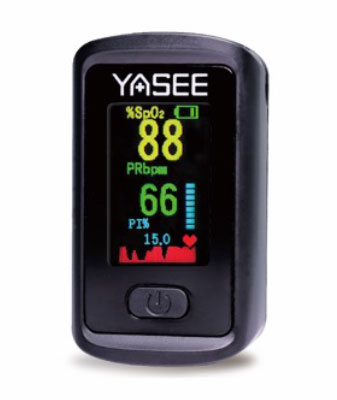
How to act as the First Responsible Person to prevent COVID-19 for people with diabetes, hypertension and high uric acid?
2022-12-19
Why do these groups need to monitor oxygen saturation regularly?
2023-01-03Summary:
SpO2 (blood oxygen saturation levels) of a healthy person should fall in between 94% and 100%. Supplementary oxygen should be used if SpO2 level falls below 90%, which is unacceptable for a prolonged period of time. Medicare will pay for oxygen therapy and oxygen equipment if your SpO2 readings are below 88%. If your blood oxygen saturation falls under 88% consistently, consult with a doctor immediately. Many doctors want their patients to have their SpO2 above 90%.
Details:
Here are some general guidelines to understanding oximeter readings and SpO2 values.
A healthy person should be able to achieve normal blood oxygen saturation levels (SpO2) of 94% to 99% consistently. For patients with mild respiratory diseases, the SpO2 should be 90% or above. Supplementary oxygen should be used if SpO2 levels falls below 90%, which is unacceptable for prolonged periods of time.
The blood oxygen level and the pulse rate, to a degree, are affiliated with each other but there is no strict direct correlation between the two. For example, a baby, a teenager a young adult and an elderly person in good health should all have a blood oxygen level of 94 or higher but the pulse in a baby can be 115 beats per minute while the other three people can average between 60 to 72 beats per minute. When you consider other variables like diet, and exercise regimen the range difference in pulse rate between people can be even more dramatic. A good example of such dramatic variations is marathon runners. Marathon runners can bring their pulse to as low as 35 beats per minute while maintaining a blood oxygen level of 97% or higher. This is due to the great conditioning of their bodies which makes the blood circulation so efficient that their hearts work very little to circulate the same amount of blood compared to non-runners.
Your Blood Oxygen Normal Values are dependent on your health condition, respiratory rate, percentage of oxygen in the air, activities you are performing, and other factors. Medical conditions like COPD, Asthma, Pneumonia, Lung cancer and cancer treatments like chemotherapy, smoking habit or vaping can affect the lungs capacity to transfer oxygen to the blood, thus bringing down your blood oxygen levels in a permanent way. For more details and answers to your questions visit your doctor’s office.
Medicare will pay for oxygen therapy and oxygen equipment if your SpO2 readings are below 88%. If your blood oxygen saturation falls under 88% consistently, consult with a doctor immediately. Many doctors want their patients to have their SpO2 above 90%.
Sleep apnea may affect your SpO2 level. In fact, monitoring your SpO2 level while sleeping is a good way to measure your condition. To learn more about Screening for Sleep Apnea, visit Screening Sleep Apnea with Pulse Oximeters
Recently we have learned that Finger Pulse Oximeters are becoming an essential tool for detecting early Covid-19 caused Pneumonia in patients, even when they are not showing pneumonia symptoms, as reported by Doctor Richard Levitan in The New York Times article The Infection That kills Silently Killing Coronavirus Patients
When tracking your oxygen levels in your blood pay attention to the trend. If you see anything unusual, it is time to consult your friendly doctor.
Under certain special conditions, a pulse oximeter may not give accurate results. You need to be aware of these limitations when interpreting the result.
Regardless of the reading, one should treat the patient first. The reading is only one of several important assessment criterions. Watch for symptoms of hypoxia or hypoxemia. Furthermore, pulse oximeter measures oxygen saturation, not breathing and does not indicate the removal of carbon dioxide from blood. Along with SpO2, one needs to record the respiratory rate to get an indication on breathing. If the patient is having supplementary oxygen, track the amount of oxygen also.
Take appropriate actions if the patient is not feeling OK. Emergency care may be required.
Monitor your pulse rate along with your SpO2. They are predictors of health problems. If you have abnormal readings even for a short period of time, see a doctor. Low or high pulse rate can indicate heart problems.
According to Dr. Fred Furgang in his article “Hypoxia, Oxygen, and Pulse Oximetry,” a pilot should use supplemental oxygen if the oximeter reading is below 90%, maintain at 91-92% level when doing remedial tasks and above 93% with increased workload.
The amount of oxygen in the air, which decreases at higher altitude, would have a significant effect on a person’s SpO2. A person may have a reading of 98% at sea level; it may decrease to 95% at 5,000 ft. and further to 90% at 10,000 ft. At altitude above 10,000 ft., a person may fail to adjust to the low level of oxygen and his SpO2 may drop below 80% resulting in hypoxic conditions.





